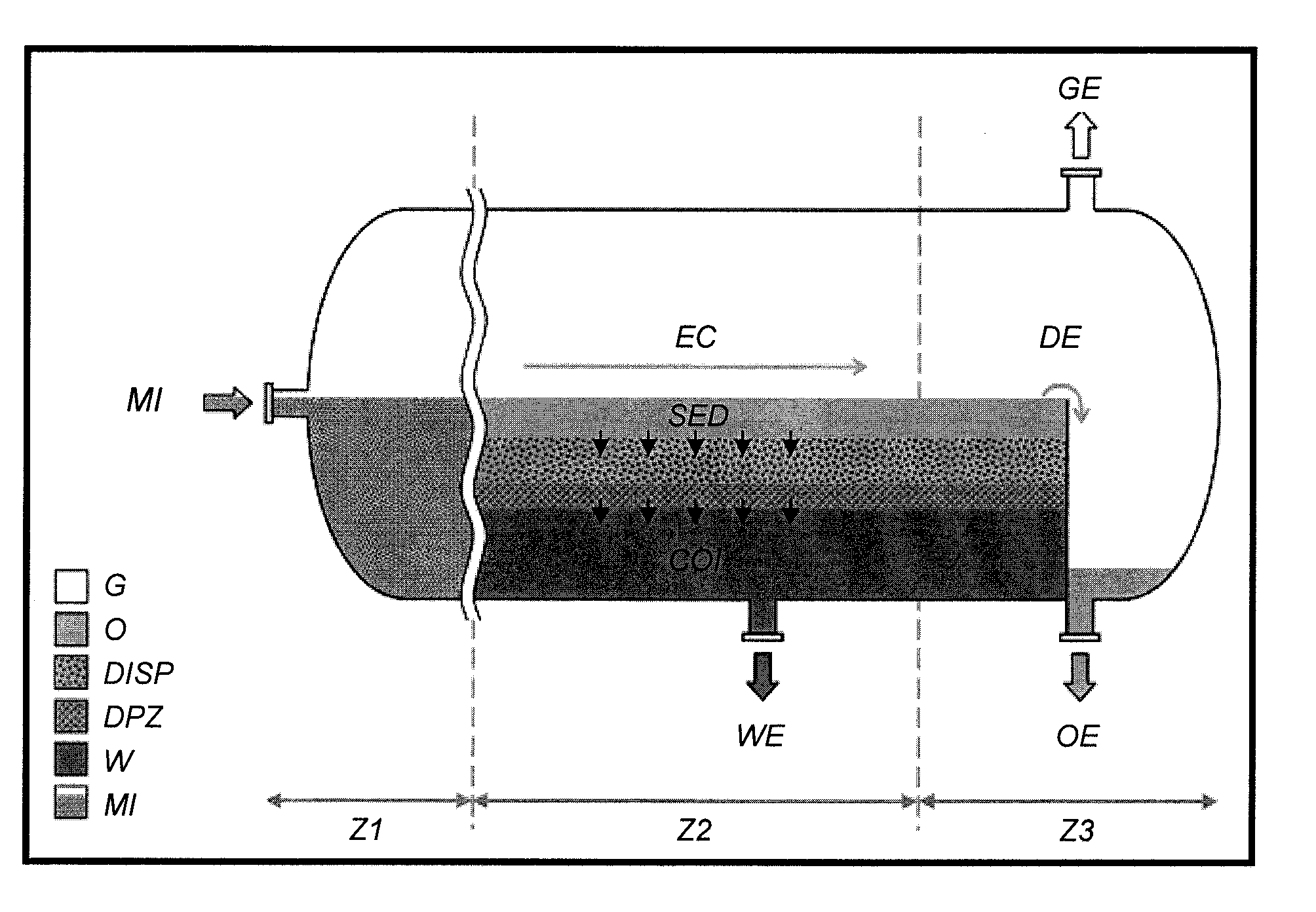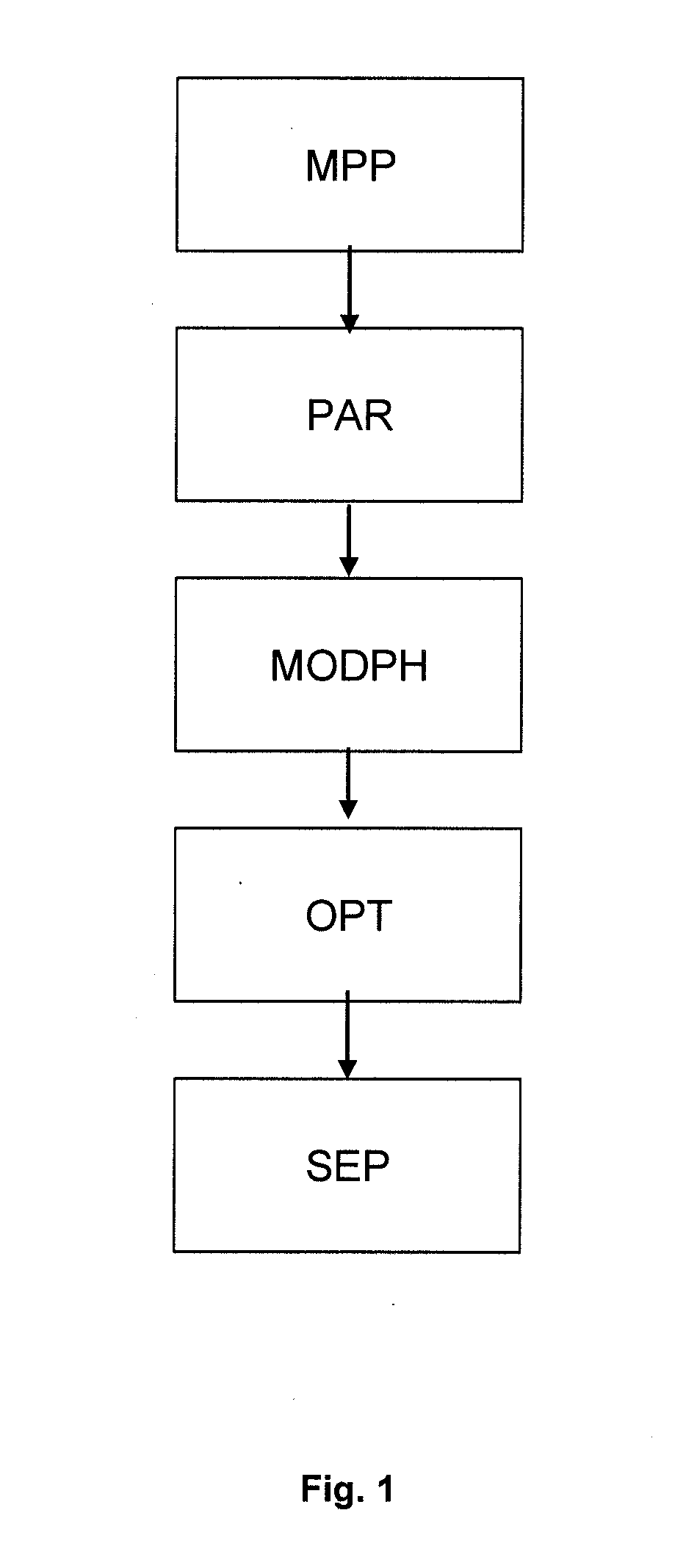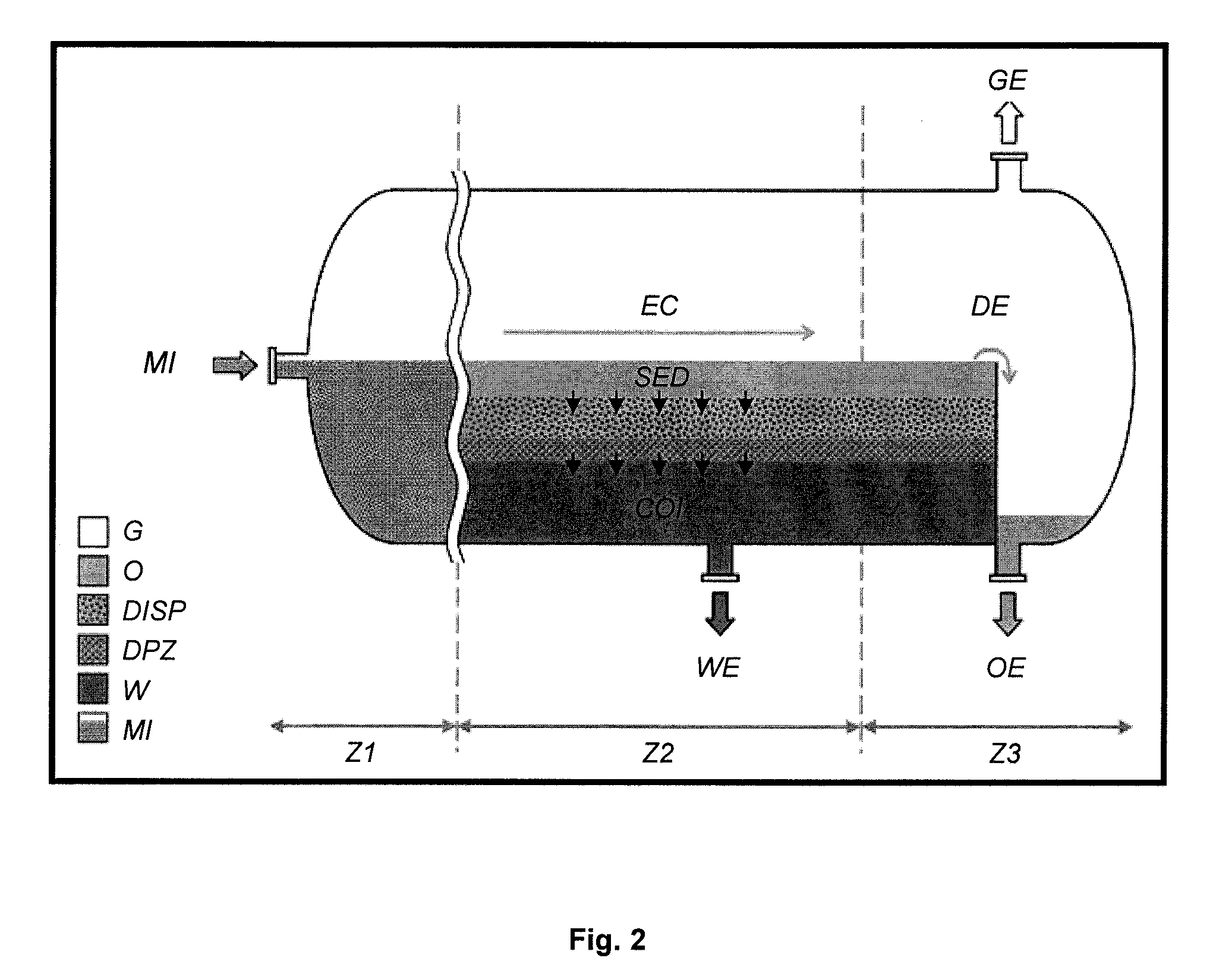Method of separating two dispersed-phase immiscible liquids
a technology of immiscible liquid and dispersed phase, which is applied in the direction of gravity filter, loose filtering material filter, stationary filter element filter, etc., can solve the problems of limited efficiency, excessive cost and size, and the inability to take into account coalescence phenomena by using these laws, etc., to achieve fixed separation efficiency, fixed separation efficiency, and fixed separation efficiency
- Summary
- Abstract
- Description
- Claims
- Application Information
AI Technical Summary
Benefits of technology
Problems solved by technology
Method used
Image
Examples
Embodiment Construction
[0045]FIG. 1 shows a flow chart of the alternative method of separating two dispersed-phase immiscible liquids according to the invention.
[0046]The method essentially comprises the following stages:
[0047]1—Measurement of physico-chemical properties relative to the liquids and to the dispersed phase (MPP)
[0048]2—Selection of predetermined parameters linked with the operation and the sizing of the separator (PAR)
[0049]3—Definition of a physical separation model according to the parameters (MODPH)
[0050]4—Using the model for determining all the non-fixed parameters and carrying out separation while respecting the values of the parameters (OPT, SEP).
[0051]The nomenclature used in the description is given in detail in Appendix 1.
[0052]According to a particular embodiment example, a horizontal gravity separator of cylindrical shape is used to separate an oil and water emulsion.
[0053]1—Measurement of Physico-Chemical Properties Relative to the Liquids and to the Dispersed Phase
[0054]The fol...
PUM
| Property | Measurement | Unit |
|---|---|---|
| size | aaaaa | aaaaa |
| physico-chemical parameters | aaaaa | aaaaa |
| physico-chemical | aaaaa | aaaaa |
Abstract
Description
Claims
Application Information
 Login to View More
Login to View More - R&D
- Intellectual Property
- Life Sciences
- Materials
- Tech Scout
- Unparalleled Data Quality
- Higher Quality Content
- 60% Fewer Hallucinations
Browse by: Latest US Patents, China's latest patents, Technical Efficacy Thesaurus, Application Domain, Technology Topic, Popular Technical Reports.
© 2025 PatSnap. All rights reserved.Legal|Privacy policy|Modern Slavery Act Transparency Statement|Sitemap|About US| Contact US: help@patsnap.com



